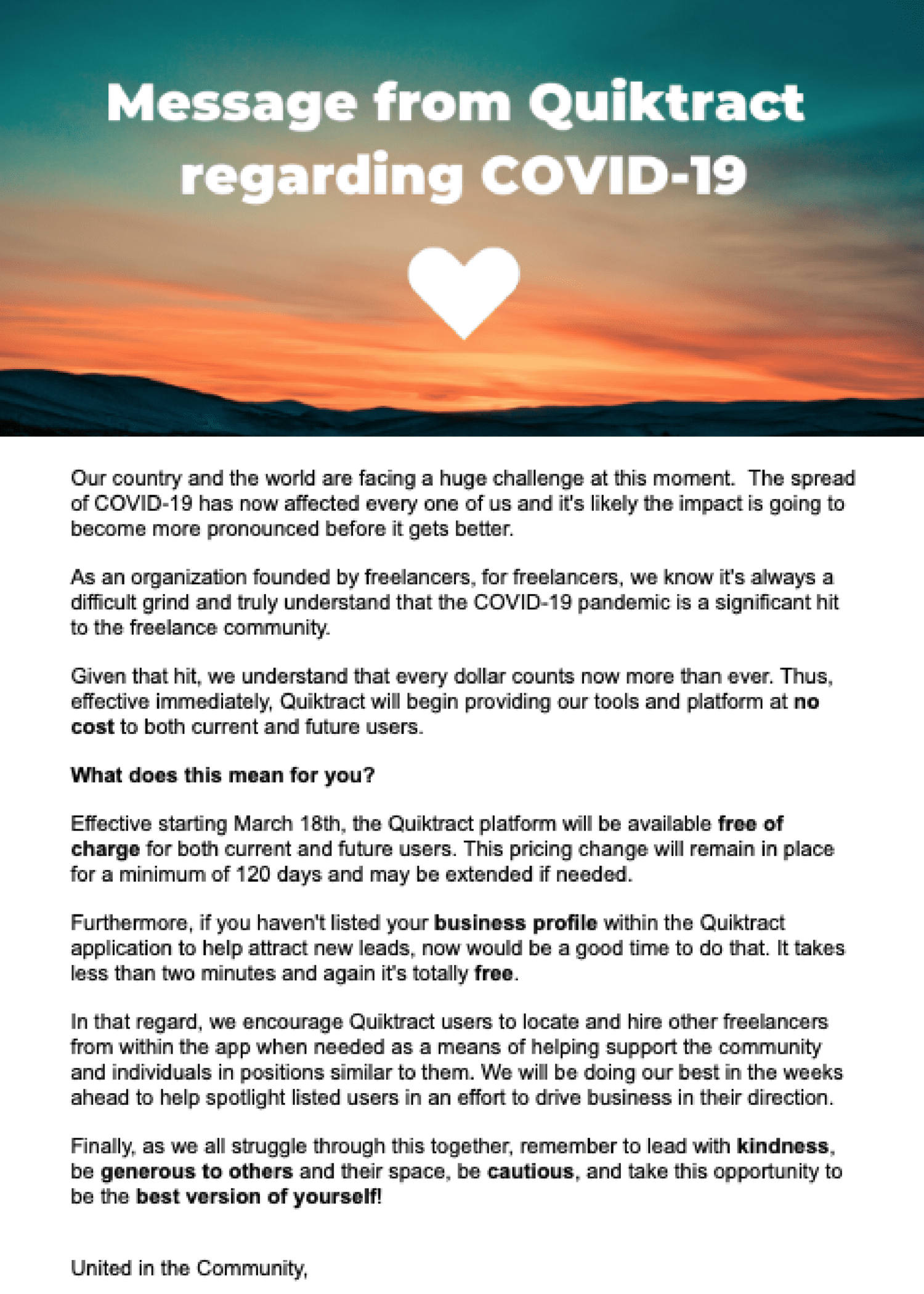The Do’s and Dont’s of Brand Communication During a Major Crisis

Written By &Marketing
With the gravity of what’s going on in the world related to the Coronavirus pandemic, you’ve probably come across content – whether it’s social media posts, emails, or on your favorite blog – that makes you scratch your head and think “Did they forget there’s a worldwide crisis underway?”
It may seem obvious that a business should refocus its message to reflect the sensitive nature of a crisis, but some have overlooked it. There are also some companies that realize their message needs to change, but they may not know how to appropriately do so. Many are struggling to position their business in the right way to their target audience during such an unprecedented time.
This prompted our &Marketing team to develop our recommended “dos and don’ts” when communicating during a crisis. Here are some tips!
Do…

Be Empathetic.
We’re all experiencing this crisis in different ways, with some of us more impacted than others. Put yourself in the shoes of those who are walking through a situation that differs from your own; this will help you shape your message appropriately and avoid offensive or insensitive content.

Be Purposeful and Intentional
Rather than haphazardly pushing out reactive emails, social posts, blogs etc., be thoughtful about your communications and recognize your place in this situation. What do clients and prospects want to hear from you right now? How can you provide them value? This will help you become a trusted, reliable resource for them.

Be transparent, honest, and human.
Sugar-coating or hiding the truth won’t get you anywhere. Your audience will appreciate your candor (and even vulnerability) about the situation and its impact on your industry. With that said, remember to keep it in check – you don’t want to create panic.

Be authentic and genuine.
Your contacts want to hear from the person they have the relationship with, not a sales rep they don’t know.

Be clear and concise.
We’re in information overload right now, especially since the situation continues to evolve at a rapid pace. Attention spans are low, as people move quickly from one news update to the next. Keep your message clear and concise so that it doesn’t get lost in the shuffle.
Don’t…

Be exploitive or self-promotional.
This crisis is not a marketing opportunity to capitalize on, so it’s not the time to push a product or service (unless it’s A. a necessity during this time or B. you’re offering it for free as a way to be supportive). Your actions and your message during a crisis shouldn’t be driven by profit, but by a desire to provide value for those in need.

Trivialize the situation.
Earlier, we mentioned the importance of empathy. Remember that, even if your business hasn’t taken a major hit, many other businesses and consumers have. Don’t minimize the situation just because you have not been directly impacted.

Do it alone.
Collaborate with your team and leaders to help frame the message so all stakeholders and perspectives are considered.

Carry on as if it’s “business as usual.”
This is not business as usual, and your message should reflect that. If you have scheduled content planned or automated emails that are still active, pause them, and rethink how that content may need to change to reflect the situation. If you don’t, you run the risk of your audience perceiving you as irresponsible or tone-deaf.

Lead with fear or blame.
Creating alarm or distress, or pointing fingers, will only make the situation more difficult. Instead, be confident, calm, and supportive in your message.
Examples of Good Communications

Arne Sorenson, President and CEO, Marriott International, shared a video update with his company that showed and relayed honestly, transparency, authenticity – not only to the situation but to Marriott employees – as they face this difficult time together.
Blake Stanton, EVP, Quiktract, sent out an email communication explaining that their platform would be free of charge to show support for its users. The email conveyed empathy and, while they’re offering this as a bonus, they aren’t being exploitive or self-promotional. Simply put, they just want to help in a time of need.
Example of Bad Communication

John Barrows, CEO, JBarrows Sales Training, shared an email in a LinkedIn post in which the sender (whose name John kindly hid) completely ignored the current situation. This post underscores the importance of personalization and changing the message.
Ultimately, a crisis does not mean you have to stop connecting with your audience, nor does it mean that every piece of content you write needs to allude to the crisis in some way. But it does mean you should shift your approach and communicate with an extra layer of empathy and sensitivity.
If you’re looking for other ways to adjust your marketing plan during a time of crisis, check out our recent blog: Keep Calm & Market On: 3 Marketing Tactics to Execute During a Crisis.
About &Marketing
In today’s fast paced world, many growing businesses are struggling to modernize their marketing approaches because either they don’t have the expertise or the bandwidth to do it themselves.
&Marketing provides seasoned marketing strategy professionals and a nimble execution team to help our clients achieve their goals. Our unique partnership model allows us to augment our client’s existing teams or outsource the entire marketing function in an affordable, flexible, and transparent way.